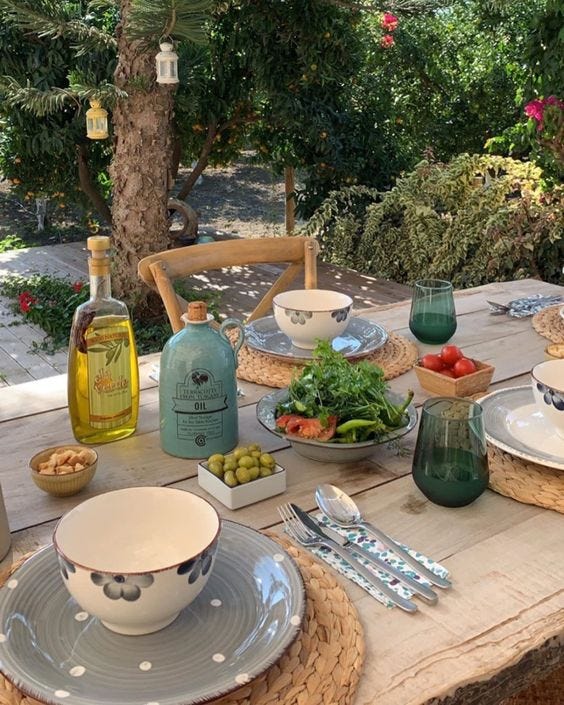Plastic is poison, and it is nowhere to be found in Tan Land.
But if you still live in the everyday ordinary world, it’s impossible to completely eliminate it from your life.
In this article I will teach you how to know where to cut it out, and where to keep it.
Plastic Reduction Framework
While there will be explicit instructions for reducing plastic in your life, the real value of this guide will be in teaching you the different factors that can make a given plastic item toxic.
This way, you can make your own educated decisions about it that work best for your situation.
And it all starts with chemistry.
Basic Premise
Plastic is toxic when it is absorbed through your skin, when you swallow it, and when you breathe it in.
The exposure can be chemical— e.g. some molecules are dissolved in something you ingest— or it can be mechanical, meaning some larger bits of plastic are just hanging out, screwing things up (e.g. microplastics).
The goal of our Plastic Reduction Framework is to intelligently minimize chemical and mechanical exposure to plastic, without going to crazy or spending too much money.
Surface Area/ Liquids
The more a substance touches a solvent, the more quickly it dissolves.
In particular, liquids have very high surface area, so when they come in contact with plastic, a lot of the plastic will get dissolved.
Think about a plastic bottle filled with rice. Only a tiny surface area of rice is actually touching the bottle. But if the bottle is filled with water, every molecule of water will touch the plastic at some point.
This is why you should never store liquids in plastic.
What to do
Avoid using plastic storage containers with food and drinks. Aluminum cans, as well as cardboard/paper (e.g. milk cartons) are lined with plastic, so they are no good either. Glass only.
Mason Jars, Pyrex containers, stainless steel, and glass bottles are good choices
Don’t purchase liquid food (e.g. honey or oil) that comes in plastic
Use cosmetics that come in glass or metal containers.
VanMan’s tallow balm and other products come in glass; yet another reason to use tallow balm.
Avoid plastic clothing, especially if you will be sweating in it
Merino wool is a good choice as a base layer both for hot- and cold-weather activities
Avoid plastic-lined pots and pans. Get ceramic, stainless steel, or cast iron instead, and use wooden or metal cooking utensils where possible
Friction
The more that things rub against other things, the more they wear down.
This is true of car engines, bike tires, and plastics, and applies most often in regard to cooking and fabrics.
What to do
Minimize skin contact with plastics, especially the more unstable ones (see below). E.g phone cases, receipts, and other electronics made of plastic, etc.
Try a copper or leather phone case instead
Make sure jewellery is made of metal
Beware that most “leather” in furniture, and the housings of most electronics, are made of plastic. Buy accordingly.
Blankets and other fabrics (like towels) are also often made of plastic, treat them as you would clothing, and buy natural fibers.
Don’t cook with plastic. Especially don’t use metal utensils with a plastic non-stick pan
Fats
Plastics are all covalent molecules, and as such, they dissolve in fats.
While plastics will leach into non-fatty liquids, they dissolve (in the chemistry sense) in fats in addition.
If you’ve ever bought a gallon of water in one of those cloudy plastic jugs, you’ll notice it explicitly tastes how the plastic smells.
So liquids and plastic are bad, but fats and plastic are especially bad, because you have the surface area and a solvent prone to dissolving it, which your body absorbs ready for storage in your own fat tissues.
What to do
Some of these may sound familiar
Avoid to the greatest extent possible touching plastic to any fats. Plastic “silverware”, plastic spatulas or ladles, etc.
Especially avoid non-stick pans made of plastic (most are) when sauteing/frying things
Never ever ever buy oil in plastic. It’s like buying soup in a bread bowl and expecting the bread to not get into the soup
Heat
Heat accelerates the speed of all chemical reactions.
Try stirring sugar into hot vs. cold coffee and you’ll see what I mean. When the solvent is hot, the stuff dissolves almost immediately.
So imagine what happens to a plastic tupperware full of already high surface area, fatty food when you throw it in the mircowave?
Might as well just eat the tupperware.
What to do
You may start to notice some patterns here…
Never heat plastic containers, or use plastic utensils when they will be exposed to extreme heat. Styrofoam included— good bye uber eats
Note that even “paper” containers are lined with plastic to make them waterproof…
Again, don’t wear plastic clothing while you’re sweating or when it’s hot out.
Try to keep the windows in your car cracked, or park in the shade. Most car interiors are made of plastic, and you can smell it when you open the door on a hot day
If you have any household plastic items, furniture, etc., keep them away from heaters and bright sunlight, which will cause them to give off gasses even faster…
Off-gassing
It’s not just the solid or dissolved plastic you need to be aware of— plastic can also dissolve into the air. This is called off-gassing, and you can smell it quite easily. It is the “new car smell”.
Off-gassing affects new plastics more than old (because old plastics have already off-gassed the easily dislodged molecules), and of course is accelerated with heat, surface area, etc.
Keep reading with a 7-day free trial
Subscribe to Tan Land: Natural Health and Beauty to keep reading this post and get 7 days of free access to the full post archives.






